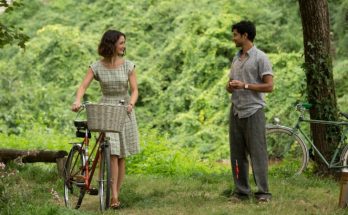
Makiko Ui is a Tokyo-based photographer who was been working with the indigenous Ainu people of Hokkaido, Japan for over twenty years. Her photographs of their way of life have won numerous awards and she has published several books of her work. Now her ravishing photos have been brought to the UK in a special limited-time exhibition called ‘Ainu, Portrait of the Wind’ at the National Geographic Store in Knightsbridge, London.
Accompanying this exhibition was a recent Japan Foundation talk entitled ‘Depicting the World of Kamuy – Portraits of the Ainu’, where Ui discussed her deep and abiding relationship with the Ainu, and also presented a slideshow of some of her photos (mostly in B&W). She was joined by Dr. Ricardo Leizaola, a Venezuelan documentary filmmaker and anthropologist from Goldsmiths’ College, who provided some context and prodded her with questions.
Unrecognized by the Japanese government as an indigenous people until 2008, the Ainu still have not received any official apologies, unlike the aboriginal peoples in Australia and Canada in the past few years. Since the Japanese essentially invaded and annexed the ancestral home of the Ainu – the nothern island of Hokkaido – over a hundred years ago, the Ainu population has dwindled and today, there are very few native speakers of the Ainu language. This is even more disappointing when you consider the fact that the Ainu have no written language with which to preserve their history and cultural heritage. All of those books have been written down in the Japanese language, primarily by non-Ainu people.
Unrecognized by the Japanese government as an indigenous people until 2008, the Ainu still have not received any official apologies
Ui is quick to note that there are some positives, however. Since she started documenting the Ainu in the early 1990s, she says there are now a lot more people who are making an effort to learn the language, and a new law enacted by the government is helping to protect the Ainu culture for future generations. And she also made it clear that she herself is not Ainu, and she has not studied their history in-depth, and therefore cannot speak for the Ainu people. But her photos speak for themselves. She tries to remain as objective as possible in terms of what she photographs, but she doesn’t work with any set rules. She just tries to see things from their perspective, and this is possible only because she has been accepted by them, as she takes photos only part of the time she is with the Ainu; the rest of the time she does normal things like cooking or embroidery.
Dr. Leizaola mentioned that he liked Ui’s mixture of formal portraits and more natural journalistic photos of the Ainu people, and he hopes that her humanistic work will afffect public opinion about the Ainu in Japan, and that the photos will become part of the collective memory of the Ainu. He thinks her photography is much more valuable than thick, dry books written by academics which gather dust in university libraries. He finished by saying that ‘Photography is important for bridging the gap between different cultures. You don’t need to be interested in ethnography or anthropology to appreciate the beauty of these images’.
You can see them for yourself at the National Geographic Store until August 27, 2013.
By Tim Holm



